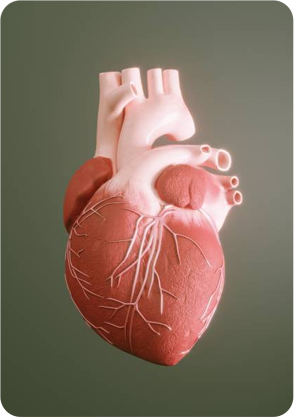
One of the most dangerous and potentially life-threatening effects of AKU occurs when HGA builds up in the arteries and inside of the heart. The HGA present in the blood sticks to the vessels and valves of the heart, causing them to harden. They then become blackened, brittle and narrowed, making it difficult to maintain the flow of blood around the body. This can cause increased pressure within the heart left ventricle and lead to heart failure.¹
After the age of 40, patients should be monitored for possible heart complications related to AKU. An echocardiogram (ECG) can detect problems with the heart valves and a CT/MRI scan of the chest can detect problems with the arteries.
Some AKU patients may need a heart valve replacement. Surgeons have reported that it’s a difficult surgery to perform, due to hard and brittle tissue of the heart and the aorta. Care needs to be taken during aortic valve surgery to ensure that debris from the damaged tissue is not carried by the bloodstream and increase a patient’s risk of stroke.
There has been an increased recognition of problems with the heart, blood pressure and cholesterol in AKU patients. These heart features of alkaptonuria have the potential to be fatal.
Some health professionals believe the link between heart problems and AKU may have been previously underestimated. However, heart issues are still believed to be an uncommon symptom, usually occurring later in life.
An introduction to alkaptonuria and nitisinone
